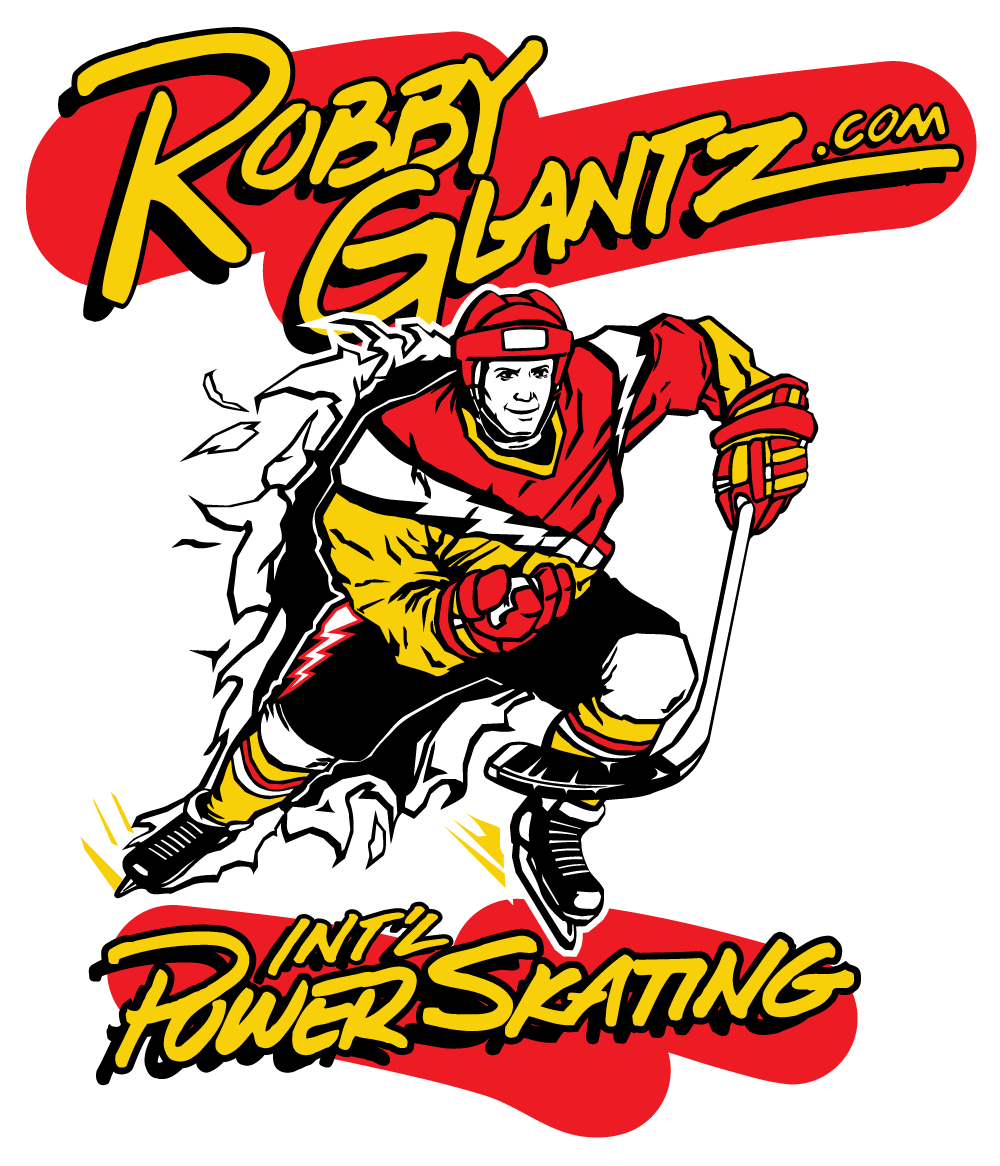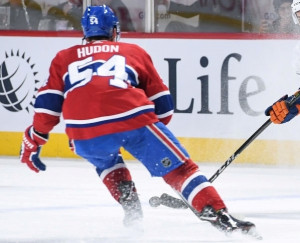The Backward Stop can be intimidating, even for the most advanced players. And, as with the Forward Stop, you are going to need to do your share of falling down when practicing. Again, this only means that you are attempting to improve by coming out of your skating comfort zone.
Note: Try to think of any kind of Hockey Stop as a Hockey Slide first and as Hockey Stop second. To achieve this, you must learn to slide along the top of the ice first, before you actually come to a stop. You slide your skates by making them light on the ice and by using the middle to front half of your edges (you use the middle to back half of the edges to turn).
Of the two kinds of Backward Stops, the Backward 90° Hips Turn Slide/Stop is the stop that I prefer to teach (as opposed to the Backward Hips Straight/V-Position Slide/Stop), however, it can be more difficult for the novice players. The following are the steps for improving both varieties of the Backward Slide/Stop:
Backward 90° Hips Turn Slide/Stop:
- Lean forward so that the back of your helmet is out in front of your knees…Bend your knees so deep, so that they are at least 2° over the toes.
- Keep your eyes forward and maintain strong core muscles (crunch your stomach)
- Be sure to turn your hips 90° (a 1-turn) from the direction you were traveling, with the back foot coming slightly off the ice, turning 90°, and then returning to the ice.
- That same back skate slides along the top of the ice, on an inside edge, with the snow coming off the middle-front part of the skate (the ball of your foot) to full extension (allowing you to sit low to the ice).
- The inside skate trails the outside one and also slides on top of the ice. (The more advanced players can land this foot on an outside edge…. however, an inside edge sliding on top of the ice is also okay). Again, the snow should be coming off the middle-front part of the edge.
- Your feet should be staggered at this point (not parallel), with the trailing foot in front of your chin and the back foot slightly behind your the back of your helmet.
- The bodyweight should be distributed with a greater percentage distributed to the outside or back skate (inside edge).
- Be sure to counterbalance the stop with your upper body, by keeping your shoulders parallel to the ice, rather than leaning or dropping the inside shoulder down towards the ice.
- You should then be in perfect position to explode back the other direction with a crossover start landing on the toes of your skates to help your rapid acceleration the other way.
Backward Hips Straight/V-Position Slide/Stop:
- (Same as Above)
- (Same as Above)
- Keep your hips facing the direction you were traveling as you begin your slide.
- Turn your knees outward and bring your heels in under your shoulders (both skates turn at the same time).
- The snow should be coming off the middle-front part of both inside edges as you begin to slide with your skates very light on top of the ice.
- When you feel comfortable and get control with the slide, then dig your inside edges into the ice harder to come to stop (drop your ankles in).
- The bodyweight should be centered directly over both skates; and be careful not to lean too far forward or you will lose your balance…. then, get up on the toes and explode forward for a quick start the other way.
The Backward Stop (both the 1 & 2 foot variety) is a very difficult maneuver even for many advanced players. However, part of improving is breaking through your fears and finding the ability to work on fundamentals that may not come naturally at first. The Backward Stopping maneuver would certainly fall into this category of being very difficult and intimidating at first and very rewarding once you get it. But keep working on it, and be sure to do it at your own pace by taking it slow at first, and youâll soon find yourself coming to a halt backwards.
By Robby Glantz

